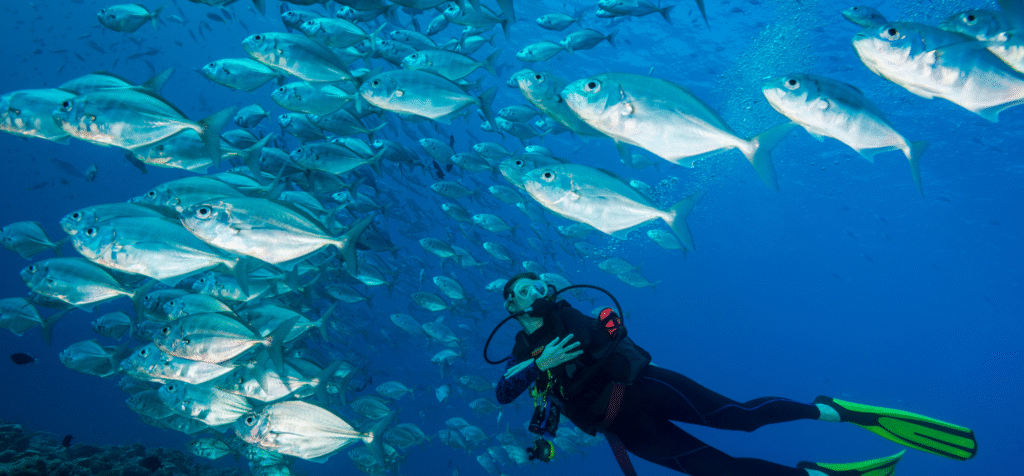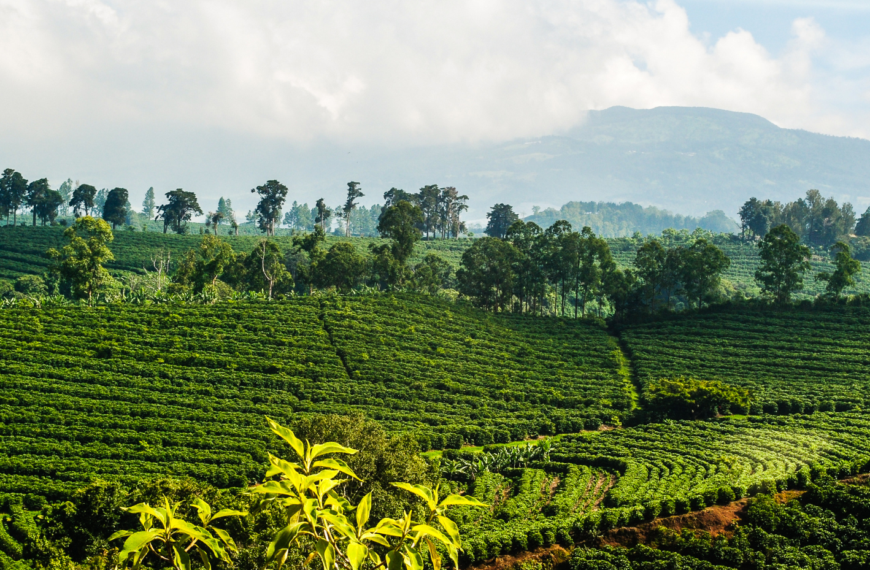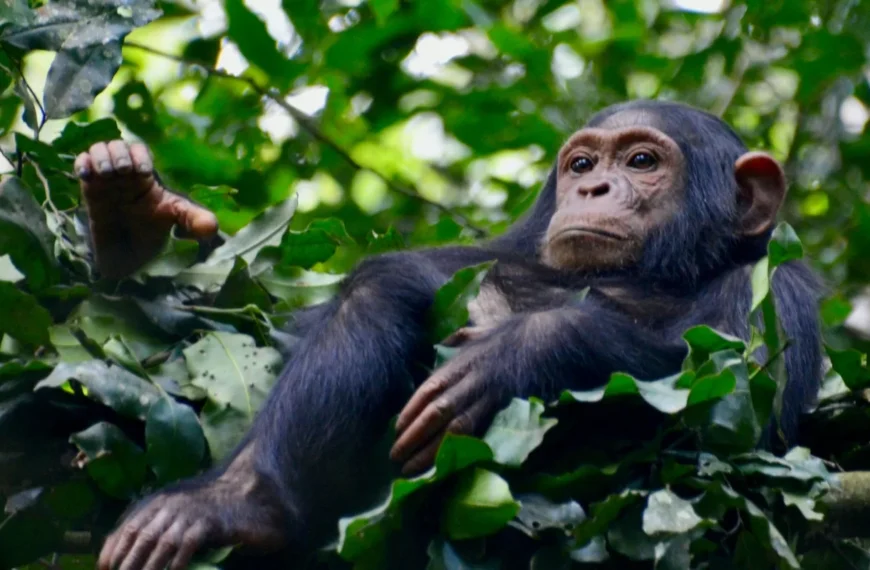How could a Pacific island nation of just 20,000 residents create a conservation model many large countries still strive for?
Palau has married cultural pride with global leadership to create a living legacy of conservation and stewardship. Initiatives, including the Palau Pledge, have redefined what it means to travel responsibly and protect marine life; a journey here is a masterclass in purpose-driven tourism.

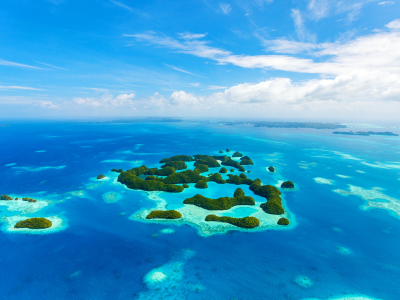
The Palau Pledge
The Palau Pledge is the world’s first immigration policy centred on environmental responsibility. It was launched on 7 December 2017 and requires every international visitor to sign a pledge upon arrival, stamped directly into their passport. This mandatory commitment, available in multiple languages, helps preserve Palau’s ecosystems and cultural traditions.
Uniquely, the pledge was co-created with local schoolchildren and is addressed to the children of Palau. It repositions tourism as a shared responsibility, symbolising a collective promise to future generations.
Unsurprisingly, this has had global resonance. The Palau Pledge has generated over 1.7 billion media impressions and is on track to reach more than two million signatures in its first decade since inception. It has inspired initiatives beyond its shores with other countries seeking to balance tourism and sustainability.
Palau’s Conservation Achievements
Shark Sanctuary
In a bold world-first move, Palau declared its entire exclusive economic zone a shark sanctuary in 2009. Over 135 shark and ray species have benefitted, as the sanctuary covers all waters up to 200 nautical miles from the coastline, encompassing hundreds of islands. This response to the global decline in shark populations led to a worldwide movement with 17 other countries following suit.
Palau National Marine Sanctuary
In 2015, Palau built on its conservation leadership by establishing the Palau National Marine Sanctuary, which protects 80% of its national waters. It banned all extractive activities, including fishing and mining, in an area about the size of California. It also made a groundbreaking ban on reef-toxic sunscreens to safeguard its coral ecosystems.
This move has protected over 1,300 fish and 700 coral species and safeguarded critical habitats for manta rays, whales and endangered sea turtles. Palau established locally-managed fisheries in the remaining 20% of the waters to also ensure food security for the nation.
The United Nations has praised Palau’s conservation model as it showcases how big of an impact a small island nation can make to protect global marine life.
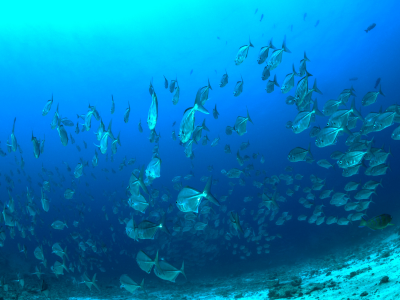
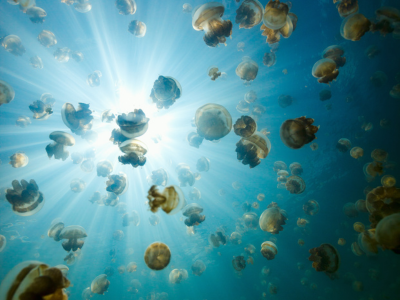
Palau Wildlife
Marine Life
Some of the planet’s most diverse and vibrant marine life exists in Palau due to its location in the heart of the Coral Triangle. The country’s pioneering conservation efforts ensure over 130 species of sharks can thrive there, as well as manta rays, which glide through the nutrient-dense waters. Over 700 coral species live in the underwater worlds of coral reefs, and hawksbill and leatherback sea turtles have critical nesting grounds on its shores. One of the most unique species here is the stingless golden jellyfish, which occupies ‘Jellyfish Lake’ in the millions.
Dugongs are among the most rare and elusive residents; these shy, gentle creatures play a crucial ecological role in maintaining healthy seagrass beds. Palau is one of the few places in Micronesia where they graze.
Land-Based Life
Palau’s land-based wildlife is just as vibrant as its marine wildlife due to millennia of isolation within rich island habitats.
Avian diversity is also exceptional in Palau. There are over 150 recorded bird species, including at least 13 endemics found nowhere else. Colorful residents bring the forests and wetlands to life, such as the Palau Fruit Dove with its soft green plumage and pinkish crown. The Palau Ground Dove, Palau Scops Owl and the Giant White-eye are further examples of species adapted to the country’s diverse habitats, which range from lush tropical forests to limestone islands.
Pioneering Responsible Tourism
The impact of the Palau Pledge extends beyond how visitors experience this island nation. It has transformed the landscape of responsible tourism and blazed a trail for other countries to follow.
At its core, the requirement for every international visitor to sign the pledge created a powerful ‘green nudge’. They must commit to protecting the environment, making stewardship a collective responsibility. 96% of visitors reported being more mindful of their environmental impact, and 65% actively used the pledge’s principles to educate others during their stay.
The Pledge has also catalysed several innovative policies and regulations, including the world’s first ban on reef-toxic sunscreens. Palau has expanded protected areas and introduced ‘Green Fees’, which channel money into local conservation projects, including marine monitoring, waste management and community-led environmental education. Tourism revenue, therefore, delivers tangible benefits to local people and nature.
In the words of Fiorenza Micheli from Stanford’s Centre for Ocean Solutions, ‘Palau is driving investment in large-scale protection to benefit people and the ocean. It is a beacon to the rest of the world.’
A Model for the World
If we have learned one thing from Palau, it’s that size is not a barrier to global leadership in conservation. Palau has set a benchmark in environmental stewardship by creating the Palau Pledge and vast marine sanctuaries, alongside its unwavering commitment to fostering responsible tourism.
A visit to this Micronesian nation is an opportunity to become part of its conservation success, not just witness it. You can explore its protected seascapes through guided dives and snorkelling excursions and go birdwatching and hiking through its pristine forests. You can even witness discussions among Palau’s environmental leaders and contribute to citizen science projects and conservation monitoring.
This is a rare opportunity. Palau invites you to stand alongside them in fighting for the future of our oceans.
Ready to Take the Pledge?
Journeys With Purpose offers private, conservation-focused journeys to Palau, with tailor-made itineraries built around your passions. Get in touch with our expert travel specialists today on +44 20 8044 9538 or at connectjourneyswithpurpose.org to find out more.
DIG A LITTLE DEEPER
Contribute to Positive Impact on a Hosted Journey.
Connect with Impact Partners around the world during a Private Experience.

